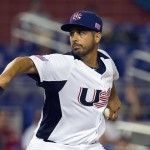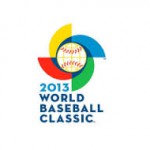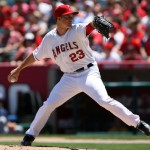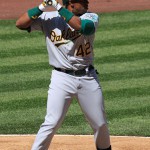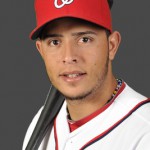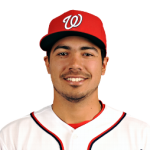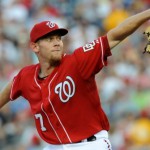
Ohmygod Strasburg only threw 80 pitches on opening day what's wrong with him?! Photo: howtowatchsports.com
The Nats handling of Stephen Strasburg in 2012 certainly caused more than its fair share of discussion in the sports world, to the point where people (read, me) don’t really want to talk about it anymore because they’re too hunkered down into their own opinions on the matter. Hence a sense of relief washed over Mike Rizzo defenders when 2013 rolled around, knowing that “the reins were off” (how many times have we heard that cliche so far this year?)
So what happens on Opening Day? Strasburg gets lifted after 80 pitches and sets of another mini fire-storm of discussion (also witness here and here). “Why’d he come out? Is he hurt? Are the Nats over-protective? Are they limiting his pitches??” *sigh* No dammit; there’s about Zero good reasons to push any pitcher in April, the Nats have a strong bullpen that will need work, and if your guy isn’t going 9, why bother pushing him through 8 if you don’t have to? Here’s an interesting observation for those who think he got pulled too early; check Strasburg’s 2012 game logs and look what happened on Opening Day 2012: he went 7 innings on 82 pitches and left. Wow; its like deja-vu! Except nobody heard a peep about it last year. Baseball writers are such hypocrites sometimes (ok rant off).
Note: here’s a story on Grantland from last September from writer Rany Jazayerli, who writes the very good “Rany on the Royals” blog and who does possibly the best baseball podcast out there with Joe Sheehan, talking about pitch counts and the Strasburg situation. I don’t want to bring back up the Strasburg shutdown situation (which he argues should have happened later than it did) but he has links to other studies on this topic.
Anyway; the situation got me thinking about an old draft post I had about Pitch Counts in general, that stemmed from a podcast conversation on the topic from months ago. Just last week I posted about Johan Santana, who re-injured his surgically repaired shoulder in 2012 pretty much the day after he was allowed to go 134 pitches to complete a no-hitter. The general consensus among baseball pundits and professionals is that 100 pitches per outing is a good “benchmark” for starters. If you get much above 110-115 pitches in an outing you’re pushing it.
But do these pitch counts make sense? In 2007 Little League established a new set of guidelines for youth pitching limits, going away from the old innings pitched per week limits and going by pitch counts. Here’s the general guidelines for pitch count limits and for mandatory rest periods now in place for youth baseball:
| Age | Max Pitches per Day | Mandatory Days rest if throw Max |
| 7-8 | 50 | 2 days |
| 9-10 | 75 | 3 days |
| 11-12 | 85 | 4 days |
| 13-16 | 95 | 4 days |
| 17-18 | 105 | 4 days |
Basically, if you throw 76 or more pitches in a day, you’re sitting for 4 days, and the max pitches you can throw gradually rises as you age, topping out at 105 pitches for 17-18 year olds. There’s a graduating rest scale for throwing fewer pitches by the number and by age (see the above links for exact details if you’re interested).
But here’s the point of this list; If its “ok” for a 17 year old amateur to throw 105 pitches and then rest for four days …. are you really telling me that a Major League Starter, a professional athlete paid millions of dollars with access to the best coaching and training staffs available, a man who is conditioned and trains year round to do nothing BUT throw a baseball for a living … you’re telling me that this person also works more or less off of a 100 pitch limit??
Are we too worried about pitch counts? If Strasburg hits 115 pitches, are we really going to start talking about how the world is ending and how Davey Johnson is abusing his pitcher? What is a more realistic pitch count limit for professionals?
Research seems to show that there is a Pitch Count threshold at which even professionals seem to be affected. And that limit seems to be right around 120 pitches per outing. This Baseball Prospectus study in 2002 by Keith Woolner shows that a 120+ pitch outing will result in a distinct drop-off in subsequent pitching performances in pitchers for the next few weeks, supporting the notion that you can really “over-work” a pitcher to the detriment of his health (as we saw with Santana clearly; his ERA pre and post 134 pitch performance in 2012 was 2.75 and 8.27). I just wish this research was updated: he based it off of stats from a decade ago and I feel like enough has changed in the game that the study needs revisiting.
I can’t find any “in-game” pitch count studies showing how much a pitcher’s performance dropped off after the 120th pitch, but the BP study mentioned here is really the concern. If your performance is impacted for weeks after a long outing, that’s proof enough for me to yank a guy before he gets to 120 pitches in a game.
So perhaps we SHOULD be worried about pitch counts, but only if we get someone above 120 pitches. Here’s a quick glance at the max pitches our 5 starters threw last year:
- Strasburg: 119 pitches on June 8th in Boston, a season-high 13 Ks.
- Gonzalez: 119 pitches on Aug 31st to finish off a 5-hit shutout against St. Louis.
- Zimmermann: 112 pitches on Sept 29th against St. Louis, his final start of the regular season.
- Jackson: 123 pitches on Aug 30th to complete 8 innings of 4-hit ball vs St. Louis.
- Detwiler: 100 pitches on May 25th to labor through 4 1/3 in Atlanta.
and just for good measure:
- Haren: 126 pitches on May 24th vs Seattle to finish off a 4-hit shutout with 14 Ks.
You can see how managers sometimes go against their better judgement to allow pitchers to finish off shutouts and no-hitters. Two of these six pitchers had their highest totals trying to finish off shutouts. How do you tell a guy with a shutout through eight innings that he’s done because he’s reached some arbitrary pitch limit? Interestingly, Johnson allowed two of his guys to get their highest totals in the August show-down series with St. Louis. What’s also interesting about the above numbers is just how little Detwiler was trusted; his MAX effort all year was 100 pitches; talk about being treated with kid gloves. I wonder if he’s going to be trusted to go deeper into games this year.
Conclusion: I’ll now scoff anytime someone whines about a 100 or 110 pitch limit for a pro, but will go bananas if our guys broach 120 unless there’s mitigating circumstances.
(post-script: Counter point from Jeff Passan who talks about pitch count abuse done to the obscene in Japan).
